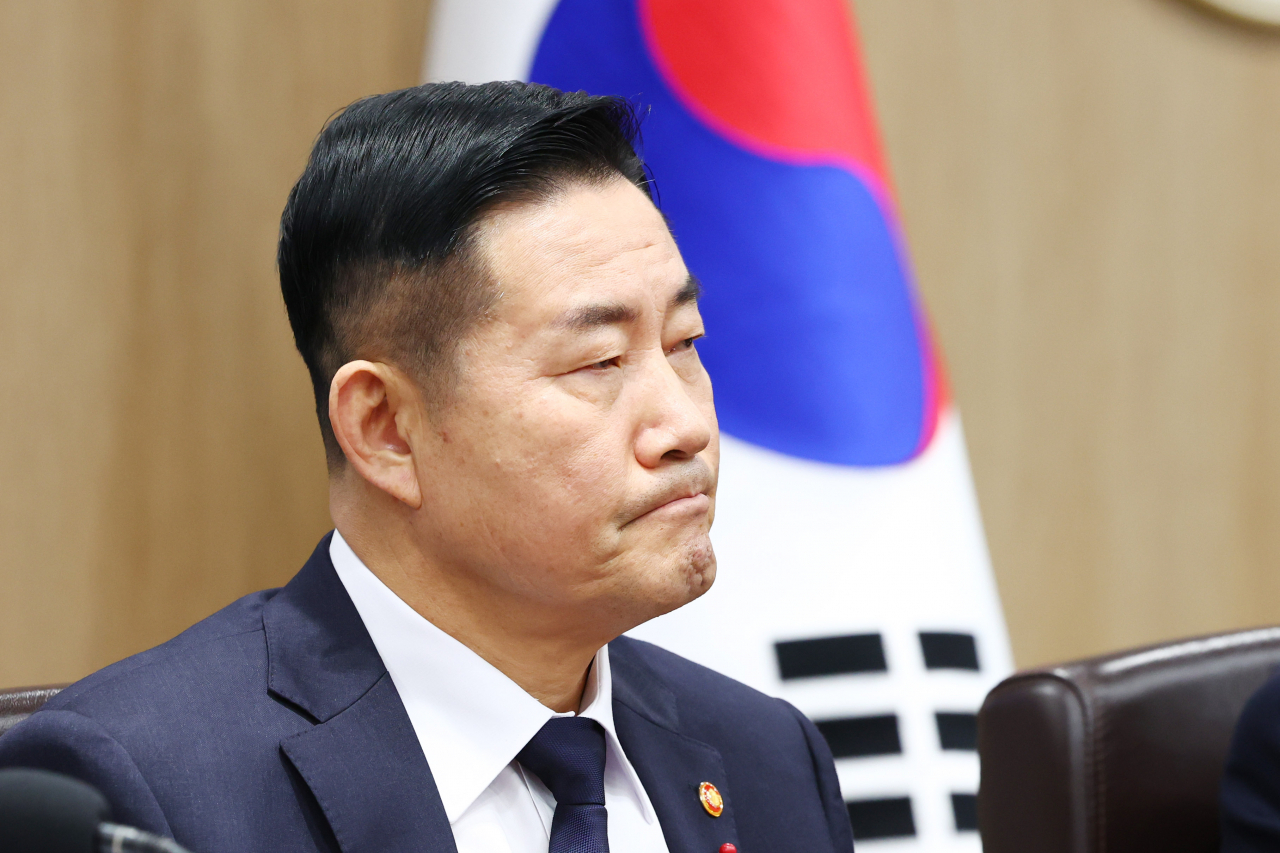South Korea, Japan, US sharing North Korean missile data ‘24/7, all year round’
By Kim Arin, Son Ji-hyoungPublished : Dec. 19, 2023 - 14:55

A trilateral scheme has kicked off for sharing data on North Korean missiles in real time among the defense chiefs of South Korea, Japan and the US.
The Ministry of National Defense in Seoul said Tuesday its prelaunch inspections have found the missile data-sharing scheme to be “completely ready for operations” and currently “operating smoothly.”
The Defense Ministry said the scheme would allow the three allies to detect North Korea’s missiles and share related information in real-time to defend the security interests of each country.
The establishment of such a scheme was decided during the Camp David summit meeting in August. Prior to the launch, the defense chiefs of the three countries -- South Korea’s Shin Won-sik, Japan’s Minoru Kihara and the US’ Lloyd Austin -- ran through final checks in November, Seoul’s Defense Ministry said.
The warning data being shared through the scheme includes a missile’s point of launch and impact as well as its flight trajectory. The Defense Ministry in Seoul said information surrounding the assets deployed for gathering the missile data will not be shared.
In a pooled interview Monday, South Korean Defense Minister Shin Won-sik said the scheme would allow the allies to trade missile data obtained through not only maritime means, which had been the case so far, but also via ground detection.
“When a missile takes off, we are sharing data on its launch site, flight characteristics and the final location of impact as it comes so we have the means to respond effectively,” the minister said. “The scheme is open for 24-7-365 use.”
In a Cabinet meeting on Tuesday, President Yoon Suk Yeol said the three-way cooperation will keep North Korea’s nuclear threats under the radar. He told his ministers North Korea “will realize someday that they are only hurting themselves with these provocations.”
North Korea’s back-to-back missile firing Sunday and Monday came as South Korea and the US agreed to complete guidelines for a joint nuclear deterrence strategy by the summer of next year during the second meeting of the Nuclear Consultative Group.
Yoon said the two countries touched on “practical matters of a South Korea-US alliance based on nuclear capabilities” through the meeting.
On firing an intercontinental ballistic missile into the sea east of the Korean Peninsula, North Korea commended the launch as a display of what the country is capable of “in the face of war moves by the US.”
In a statement Tuesday, the North’s official Korea Central News Agency said its Defense Ministry has ordered a “strong warning response to the enemy forces’ blatant acts of military threats.” More specifically, the state news agency cited the NCG meeting in the US and the arrival of the US attack submarine in South Korea.
Identifying the solid-fuel ICBM as Hwasong-18, the KCNA claimed that the “missile launch training did not have any negative impact on the security of nearby countries.”
The fifth ICBM launch of the year by the North prompted a US call for the United Nations Security Council to meet on Wednesday.





![[Music in drama] Rekindle a love that slipped through your fingers](http://res.heraldm.com/phpwas/restmb_idxmake.php?idx=644&simg=/content/image/2024/05/01/20240501050484_0.jpg&u=20240501151646)




![[New faces of Assembly] Architect behind ‘audacious initiative’ believes in denuclearized North Korea](http://res.heraldm.com/phpwas/restmb_idxmake.php?idx=644&simg=/content/image/2024/05/01/20240501050627_0.jpg&u=20240502093000)









![[Today’s K-pop] Stray Kids go gold in US with ‘Maniac’](http://res.heraldm.com/phpwas/restmb_idxmake.php?idx=642&simg=/content/image/2024/05/02/20240502050771_0.jpg&u=)